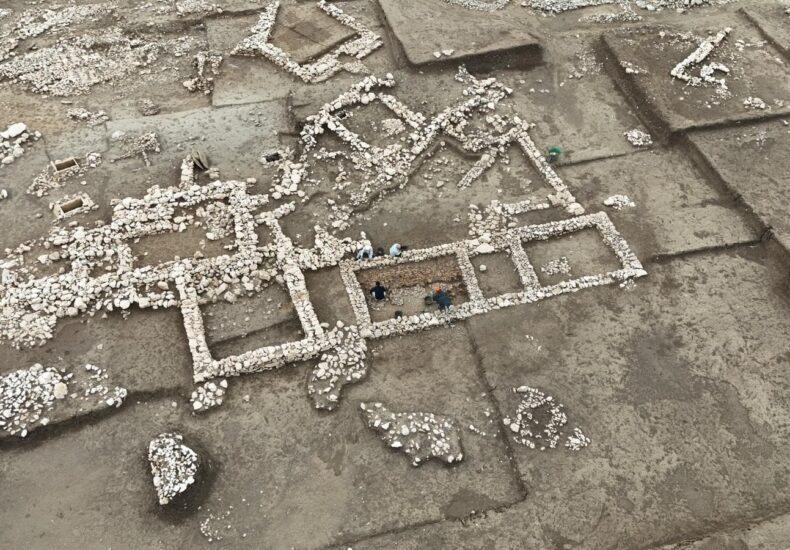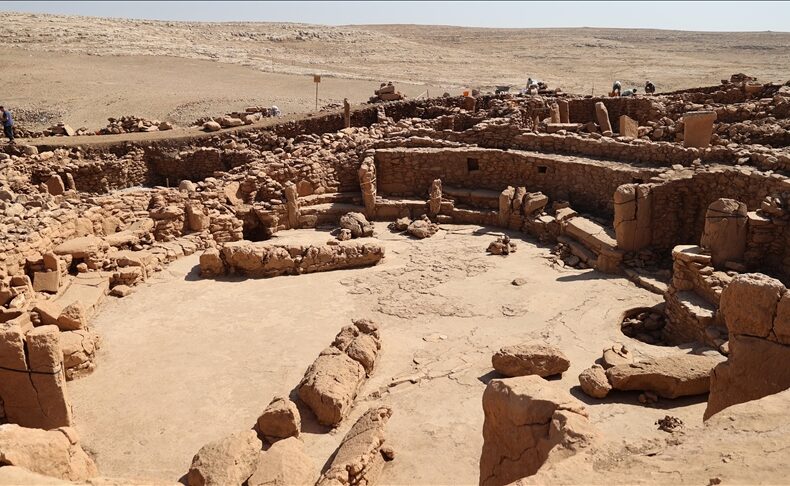
5,000-Year-Old Earthquake Collapse Uncovered at Çayönü Mound in Southeastern Türkiye
Archaeologists excavating the prehistoric settlement of Çayönü Tepesi in Diyarbakır’s Ergani district have uncovered the remains of a building that collapsed during a powerful earthquake roughly 5,000 years ago — a rare glimpse into the seismic past of one of Anatolia’s earliest farming communities. Layers of a Forgotten Tremor The discovery was announced by Assoc.

Karahantepe Offers Clues That Göbeklitepe Was More Than a Ritual Site
New excavations at Karahantepe, one of the key sites of the Taş Tepeler Project in southeastern Türkiye, are reshaping how archaeologists interpret the world’s earliest monumental centers.According to excavation director Prof. Dr. Necmi Karul, the newly uncovered structures suggest that these places were not only used for rituals but also formed part of organized Neolithic

1,500-Year-Old Greek Mosaic Unearthed at Urfa Castle Reveals Names of Early Byzantine Clergy
Archaeologists working at the ancient Urfa Castle in southeastern Türkiye have uncovered a 5th-century Greek-inscribed floor mosaic decorated with intricate plant, animal, and geometric motifs. The discovery, believed to belong to a small church, chapel, or martyr shrine, provides new insights into the religious and social hierarchy of the early Byzantine city of Edessa —

12,000-Year-Old Underwater Rock Paintings Discovered Beneath Atatürk Dam in Southeastern Türkiye
Underwater engravings reveal traces of prehistoric life in Southeastern Türkiye Archaeologists in Türkiye have documented rock engravings dating back more than 12,000 years beneath the waters of the Atatürk Dam in Adıyaman Province — a discovery shedding new light on the prehistoric communities that once lived along the Euphrates basin. The engravings, believed to belong

3,300-Year-Old Hittite Tablets and Official Seals Unearthed at Oylum Höyük Reveal a Lost Administrative Center
Archaeologists working at Oylum Höyük in Kilis, near the Turkish–Syrian border, have uncovered four cuneiform tablets — two written in Hittite and two in Akkadian — along with five clay seal impressions belonging to local administrators of the Hittite Empire. The finds, dating to the 13th–14th centuries B.C., shed new light on how the empire

Daily Life Unearthed at Karahantepe: Over 30 Neolithic Dwellings Discovered in Southeastern Türkiye
Archaeologists excavating the Neolithic site of Karahantepe in Şanlıurfa — one of the key locations within the Taş Tepeler (Stone Hills) Project — have uncovered more than 30 small dwellings dating back 11,000 years. The discovery reveals that this ancient settlement was not only a place of monumental architecture and ritual but also home to

Roman-Era Settlement Unearthed in Adıyaman’s Mountains May Have Been a Large-Scale Wine Production Center
Archaeologists in southeastern Türkiye have identified a vast 4th-century Roman settlement in the mountains of Adıyaman’s Gerger district, revealing evidence of industrial-scale wine production and rural life on the empire’s eastern frontier. The discovery, made by the Adıyaman Museum Directorate near Oymaklı village, spans roughly 150 dönüms (15 hectares) of rugged terrain overlooking the Kahta

1,500-Year-Old Mosaic Unearthed Beneath a Historic Mill in Midyat May Reveal Early Byzantine Administrator’s Residence
A 1,500-year-old mosaic floor discovered beneath a historic mill in southeastern Türkiye’s Midyat district may have once belonged to an early Byzantine official named Tittos Domestikos.The find marks the first mosaic ever uncovered along the Midyat–Nusaybin corridor, a region better known for its ancient fortresses and caravanserais. The discovery was made in Sivrice (Beyazsu area),

3,000-Year-Old Public Building Unearthed in Soğmatar, the Sacred City of the Moon God Sin
Archaeologists in southeastern Türkiye have unearthed a 3,000-year-old public building in Soğmatar, an ancient sanctuary dedicated to the Moon God Sin. The discovery, made under the Ministry of Culture and Tourism’s “Heritage for the Future Project”, pushes the history of the site back to the Neo-Assyrian period, revealing new layers in the spiritual and administrative

Unique Architectural Detail Unveiled: The “Fingerprint Dome” of Saint George Church Reopens in Diyarbakır
The 1,800-year-old Saint George Church in Diyarbakır has reopened after a meticulous restoration, revealing a striking architectural feature: a brick dome resembling a human fingerprint. Believed to carry the personal mark of its ancient architect, the structure is drawing thousands of visitors and renewed global attention. Located within the historic İçkale Museum Complex, the Saint
